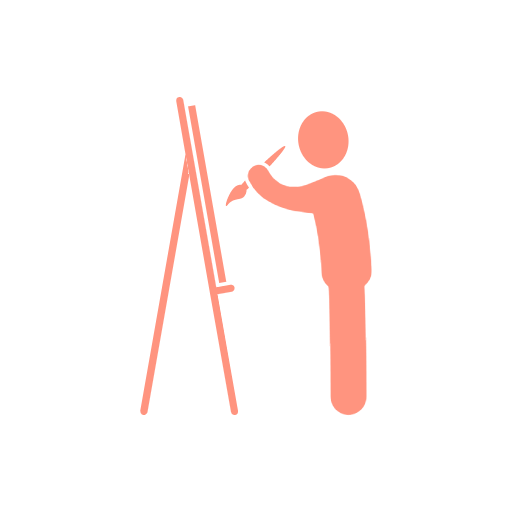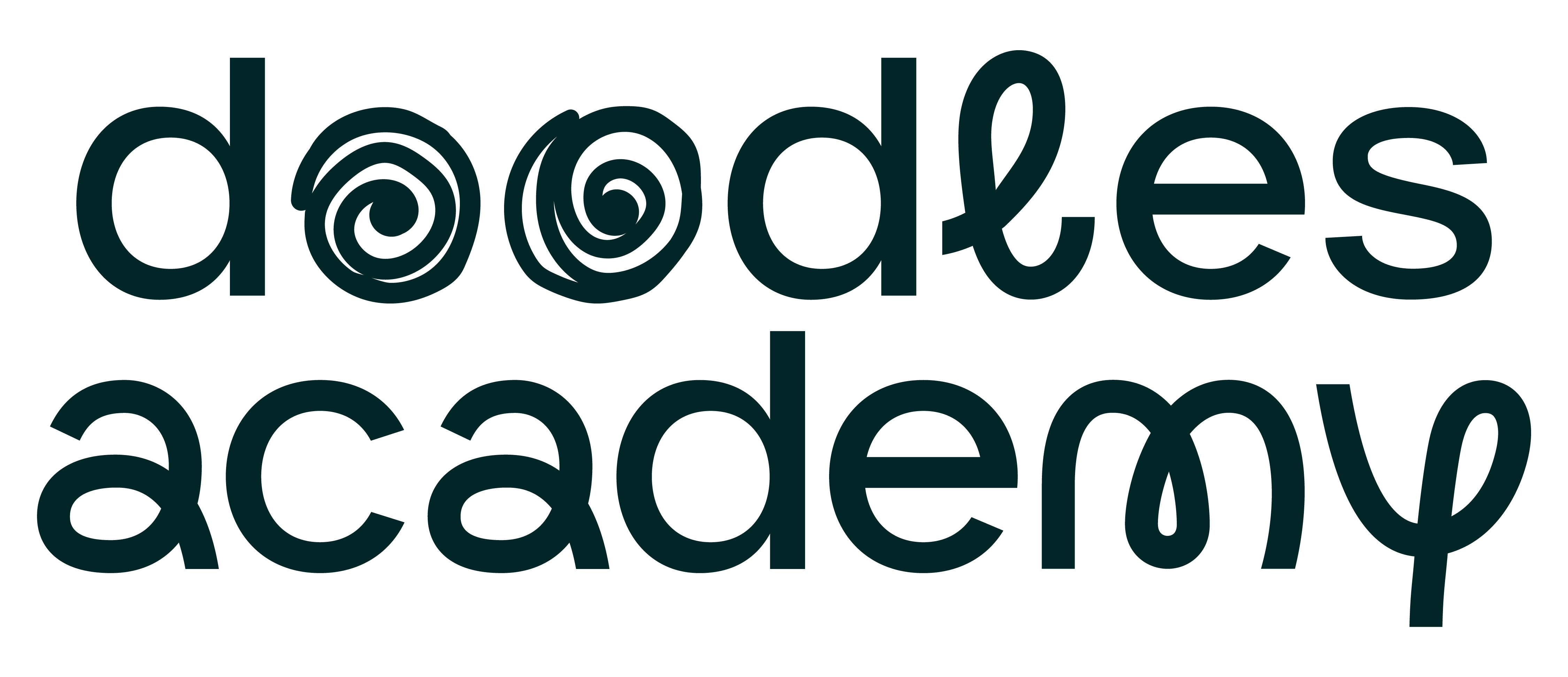Back to: Superheroes (upper grades)
Overview:
In this lesson, student artists are introduced to the basic characteristics of superheroes, as well as understanding that each superhero had his or her own unique backstory that told who they were, where they came from, and why or how they became a superhero. Student artists are tasked to brainstorm their own superheroes and to generate a backstory by creating a small book (a ‘zine’) and using any combination of writing and drawing to document their superhero’s history. They leave the cover blank for the upcoming lessons.
Students will be able to:
- use multi-media to create and illustrate a narrative that explains their superhero’s backstory.
Setup:

Students will be working independently.

Have materials set up in a way that is easy to pass out, see, and select from.
Materials:
- Pencils
- Pens
- Markers
- Construction paper
- Scissors
- Glue
- Magazines
Media:
- Optional: 5 Minute Marvel Stories (for the early finishers) or old comics
Handouts & Photocopies:
- N/A
Lesson 1
10M, INSPIRATION IMAGE
LOOK AND DISCUSS AN ART PIECE THAT INTRODUCES SOME OF THE LESSON CONCEPTS
Project the inspiration image where students can see it. Give students a moment to study it silently, then begin a brief discussion with the phrase, “What can we find?”. Paraphrase what students say for the benefit of the class, being careful to remain neutral, then ask “What else can we find?”. Alternately, allow them to draw or write what they notice on a blank piece of paper or in a sketchbook.
- Clementine Hunter, murals on site at the African House, Melrose Plantation
- Clementine Hunter didn’t begin painting until age 52, and then would paint on whatever materials she could find (for example, discarded window shades). The African House on the Melrose Plantation hosts her murals, which are narrative depictions of the life around her. As in comics, the narrative is sprawling and continuous.
Note on using the information above: As your students participate in a conversation around this artwork, it may occasionally be helpful to provide them with additional or contextual information. This information can and should be imparted at the teacher’s discretion.
The point of this discussion time is to have students learn and add onto each other’s thoughts. By remaining neutral and simply repeating what students say you allow students to do the heavy mental lifting and also create an environment where there is no wrong answer, fostering creativity and mental risk-taking.
5M, INTRODUCTION VIDEO
WATCH THE INTRODUCTION VIDEO & CHECK FOR UNDERSTANDING
Check for understanding by asking, “Who was listening closely that can sum up what we are doing today?” Make sure that student artists can list all the steps and clarify anything that needs clarifying.
20-25M, WORKTIME
FOCUS ON GETTING THE KIDS EXCITED ABOUT AND FLESHING OUT THEIR CHARACTER
At this point, the focus of the class period should be getting student artists invested in their character. The teacher should show lots of excitement and listen to the stories the students are coming up with. Periodically stop the class and have artists share the backstory of their superhero to get increased engagement. At this point, don’t worry about students refining their work—the focus is on getting the artists invested in their character. However, try to encourage them to come up with concrete details (what their superhero does, who they fight, what their name is, why they are a superhero, etc.) rather than simply drawing.
5-10M, CLEAN-UP/PRESENTATIONS
STUDENTS PRESENT WORKS IN PROGRESS AND DISCUSS THE ARTISTIC DECISIONS THAT THEY MADE
Sharing should work as follows:
- Student stands by their work. A teacher should hold it, or place it on an easel.
- The student presents their work, answering What they made, How they made it, and Why they made the decisions that they did. When they are done they ask, “Any comments or questions?” and can take responses from the audience.
- A note on responses: it is o.k. if an audience member questions or wants clarification from the artist. It is also o.k. if an audience member makes suggestions. But it must be done in a kind, thoughtful, and respectful way.
- Always end the conversation by asking the class to give the artist a compliment.
Depending on the teacher’s style of classroom management, it might be helpful to only choose and train a few kids to clean. The rest of the class can be busy with the presentation. Make sure to train these helpers well in advance so that you aren’t left with a messy room.
Clean-up times will vary with materials; get to know your class and allow 5-10 minutes depending on how efficient they are and whether or not the material was messy.
ANTICIPATED PROBLEMS
- If a student is having a hard time coming up with a superhero, ask them if they have heard of Superman. Tell them that he has what is called an ‘alter ego’, or a second identity. Most people think he is ordinary, but when he gets in his costume he has all sorts of powers. Ask them what sorts of powers they would want if they had an alter ego? Then guide them to design their alter ego. Alternately, have them think of their favorite book character and design a character based on that.
EARLY FINISHERS
Encourage students to add more pages and continue to create a narrative for their superhero. Suggest different types of media; if they drew a comic, suggest writing, or creating a list with drawn icons. Students will continue to work on these books throughout the project. You can also offer students the opportunity to look through old comics, or the optional ‘5 Minute Marvel’ stories.
This project is free to access, but after the first lesson, you will have to create a free account and enroll in the course. After you create an account and enroll, the project can be accessed from the ‘artroom’ tab at the top of the page.
